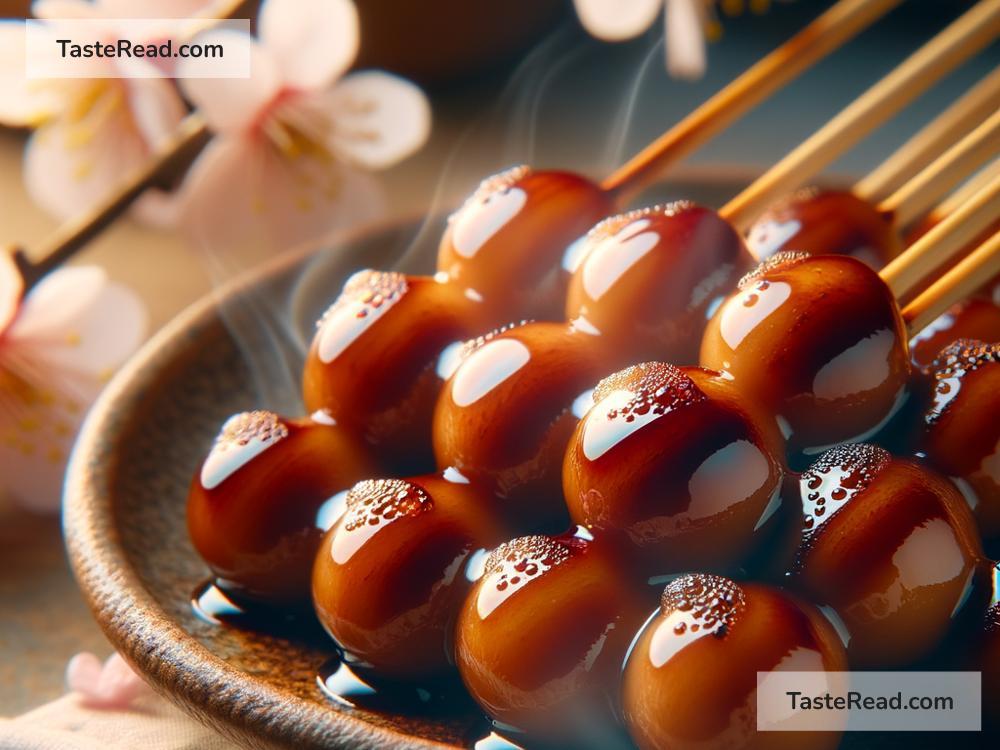Indulging in the Subtle Sweetness of Japanese Mitarashi Dango
Japan is a country full of fascinating traditions, beautiful landscapes, and, of course, delicious food. Many people know about sushi, ramen, or matcha, but there are countless other treats to try when visiting Japan. One such delight is Mitarashi Dango, a traditional Japanese sweet made of chewy rice dumplings coated in a special soy-based glaze. If you’re looking for a snack that combines subtle sweetness with a unique flavor, Mitarashi Dango is something you shouldn’t miss.
What Is Mitarashi Dango?
Mitarashi Dango belongs to the category of wagashi, which are traditional Japanese sweets. It’s made up of three to five round rice dumplings, called dango, that are skewered on a bamboo stick. The dumplings are made from a mix of glutinous rice flour (mochiko) and water, giving them a soft yet slightly chewy texture.
What makes Mitarashi Dango unique is the sauce that coats the dumplings. This sauce is made from soy sauce, sugar, and a small amount of starch, creating a glossy layer with a blend of sweetness, saltiness, and umami flavors. The dumplings are often lightly grilled before being dipped in the sauce, adding a slightly smoky aroma and crispy outside to the tender, chewy rice inside.
Where Does Mitarashi Dango Come From?
The origins of Mitarashi Dango are tied to a famous shrine in Kyoto called Shimogamo Shrine, which is one of Japan’s oldest Shinto shrines. According to local stories, the sweet dumplings were inspired by the bubbles of water found at the shrine’s Mitarashi Pond, hence the name “Mitarashi.”
Over time, this treat became popular across Japan and is now enjoyed both during festivals and as an everyday snack. You’ll find it at street food stalls, traditional tea houses, and even supermarkets.
The Experience of Eating Mitarashi Dango in Japan
Eating Mitarashi Dango is more than just enjoying food—it’s a cultural experience. Imagine wandering through a bustling food street or sitting at a cozy tea shop and being offered a freshly grilled skewer of dango. The dumplings are often served warm, making the glazed surface shiny and fragrant. The first bite is a mix of textures: the soft chewiness of the dumpling contrasts with the slight crunch of the charred edges. Then comes the flavor—the sauce is sweet but not overpowering, balanced with the salty soy sauce and a hint of umami.
One of the best places to enjoy Mitarashi Dango is during a matsuri (Japanese festival). Food stalls line the streets, offering not just Mitarashi Dango but other delights like yakitori, takoyaki, and taiyaki. The atmosphere is lively, with bright lanterns, music, and lots of happy people. Eating warm Mitarashi Dango while exploring the sights of a matsuri makes for a truly memorable experience.
How Is Mitarashi Dango Made?
Making Mitarashi Dango at home is surprisingly simple if you’re craving this Japanese treat after your trip to Japan. Here’s a quick overview:
- Making the dumplings: Mix glutinous rice flour with water until it forms a smooth, workable dough. Shape it into small balls and boil them until they float, which means they’re cooked.
- Grilling: After boiling, skew the dumplings onto bamboo sticks and lightly grill them until they have golden-brown marks. You can use a stovetop griddle or even a small flame.
- Preparing the sauce: Combine soy sauce, sugar, and a bit of cornstarch in a pot, heating the mixture until it thickens into a glossy glaze.
- Coating the dumplings: Brush or drizzle the sauce over the grilled dango, ensuring they’re evenly coated.
While these homemade dango may not have the charm of those enjoyed in a Japanese tea house or shrine, they still offer a comforting taste of Japan.
Why Should You Try Mitarashi Dango?
Mitarashi Dango is more than just a snack; it’s a connection to Japan’s culinary traditions and cultural history. Its flavors are simple yet elegant, reflecting the Japanese philosophy of finding beauty in simplicity. Whether you’ve lived in Japan for years or are visiting for the first time, it’s an excellent treat to try with friends, family, or even solo.
For those who are new to Japanese food, Mitarashi Dango is also a great introduction to wagashi. Unlike desserts that are intensely sweet, these dumplings have a subtle flavor that will appeal to a wide range of tastes. Plus, because it is gluten-free, many people with dietary restrictions can enjoy it.
Where to Find Mitarashi Dango in Japan
If you’re traveling to Japan, don’t worry about having trouble finding Mitarashi Dango! You can find it in places such as:
- Street stalls near shrines and temples, especially during festivals.
- Traditional tea houses, where you can pair it with Japanese green tea for a balanced flavor experience.
- Supermarkets or convenience stores, which often sell packaged Mitarashi Dango for quick and easy snacking.
For the most authentic experience, try it in Kyoto, near Shimogamo Shrine, where it all began.
Final Thoughts
Mitarashi Dango may look simple—a skewer of round rice dumplings—but it carries so much cultural value and unique flavor. This snack perfectly showcases the delicate balance of flavors that Japanese cuisine is known for. Whether you find yourself in a street market during a festival or at a quiet tea shop in the countryside, don’t miss the chance to try Mitarashi Dango.
The next time you’re in Japan, take a moment to indulge in this warm, chewy, and beautifully glazed treat. You’ll taste not just its sweetness but also a bit of Japan’s heart and history in every bite.

